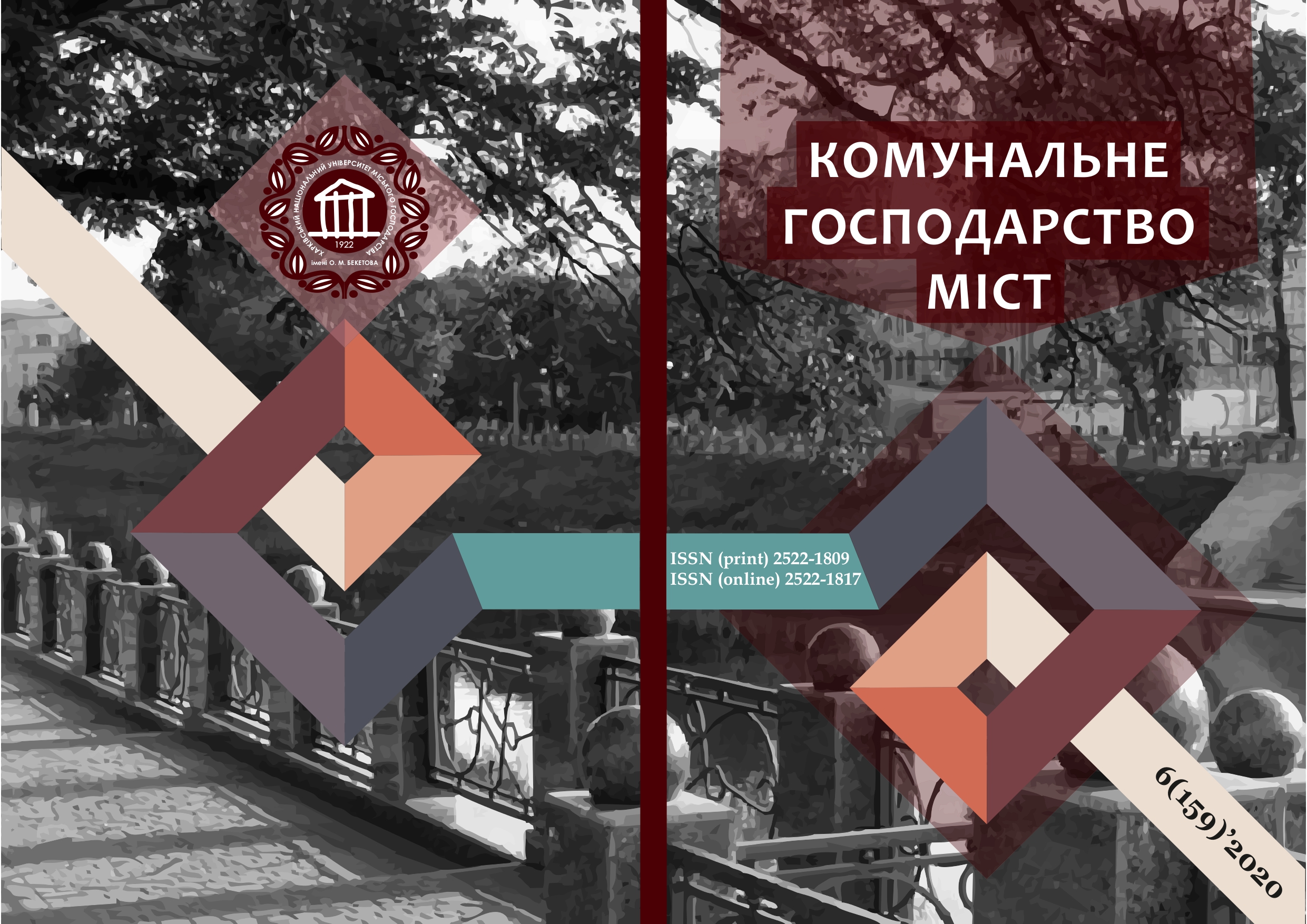PROCESSES IN URBANISM. METHODS OF RESEARCH AND DESIGN
Array
Keywords:
problems of urban planning, processes in cities, their modeling, multidimensionality of urban processes, approaches to decision makingAbstract
Tasks, methodology and practical methods of research and design of processes in urban planning are revealed. The specificity of urban problems, which are complex and require consideration of the multidimensionality of solutions, creates difficulties in their study and consideration in the justification of design decisions. Based on the methodology of the systems approach, as well as the approaches that exist in the «study of operations» and which are developed in various fields of science and practice, the article considers special aspects of methodology and methods of research and design processes in urban systems. Attention is focused on problem statement, substantiation of models, their research and comprehension of analysis results.
Regarding the study and design of processes in urban systems, the peculiarities of the approach are revealed in solving the problems of compaction of Lviv — a city where the population density per hectare exceeds all major cities of Ukraine, where the highest building density in the former USSR. According to the author, it is necessary to determine the formation of the urban system of Greater Lviv.
The transport scheme of combination of motor transport, suburban railway connection, city electric transport, air (in particular small aviation) and subway is considered in detail. The transport framework of Lviv should consist of:
- railway and automobile international transport corridors;
- ring highways connected to the city by radial connections and transport interchanges at their intersections;
- a new international station with a high-speed «narrow» track connected to the European railway network;
- high-speed main railway lines, which will connect with the cities of the supra-regional settlement system;
- subway; transport interchanges; modern bus stations.
The opinion is expressed that the mechanical annexation of territories, which has already taken place by law, threatens to lead to an even greater aggravation of existing problems and the emergence of new poorly forecasted processes. The issue can be solved by developing the concept of Greater Lviv with the involvement of urban planners, specialized specialists of design and research institutions, as well as experts in this subject area.
References
2. Glaeser, Е. L. (2011). The triumph of the city: How our greatest invention makes us richer, smarter, greener, healthier, and happier. Hardcover: Penguin Press, 352 р. (English)
3. Bekker, G. (2003). Chelovecheskoye povedeniye: ekonomicheskiy pokhod. Izbrannyye trudy po ekonomicheskoy teorii: per. s angl. M.: GU VSHE, 672 s. (Russian)
4. Rowley, A. (1996). Mixed-use Development: ambiguous concept, simplistic analysis and wishful thinking. Planning Practice & Research, №11(1), pр. 85–98. (English)
5. Floryda, P. (2019). Kpyza upbanizmu. CHomu micta poblyatʹ nac neshchacnymy. K.: Nash Format, 320 s. (Ukrainian)
6. Lerner, ZH. (2016). Akupunktura mista. Lʹviv: Vyd-vo Staroho Leva, 160 s. (Ukrainian)
7. Coupland, A. (1997). Reclaiming the City: Mixed Use Development. London: E & FN Spon., URL: http://smartech.gatech.edu/bitstream/handle/1853/40790/JoshuaHerndon_Mixed-Use+Development+in+Theory+and +Practice.pdf (English)
8. Habrel, M. (2014). Improving the efficiency of urban planning solutions in the organization of suburban areas. Lviv : Spolom, 272 p. (Ukrainian)
9. Habrel, M., Habrel, M. & Lysiak, N. (2020). Spatial Change of Lviv in the post-Soviet period and their assessment by the Residents. 5th World Multidisciplinary Civil Engineer-ing – Architecture – Urban Planning Symposium WMCAUS 2020, Prague, Czech Republic, 1–5 September 2020, p. 139. URL: https://www.wmcaus.org/files/ WMCAUS2020_Book.pdf (English)
10. Drevalʹ, I.V. (2017). Konspekt lektsiy z dystsypliny «Teoriya mistobuduvannya» (dlya stud. 6 kursu dennoyi formy navchannya, spets. 191 – Arkhitektura ta mistobuduvannya, fakhove spryamuvannya «Mistobuduvannya»). Kharkiv : KHNUMH im. O. M. Beketova, 43 s. (Ukrainian)
11. Osychenko, H.O. (2009). Arkhitektura yak chastyna landshaftu. Visnyk Kharkivsʹkoyi derzhavnoyi akademiyi dyzaynu i mystetstv. Mystetstvoznavstvo. Arkhitektura, № 6, c. 98–105. (Ukrainian)
12. Timokhin, V.O. (2008). Arkhitektura misʹkoho rozvytku. 7 knyh z teoriyi mistobuduvannya. K.: KNUBA, 629 s. (Ukrainian)
13. Habrel, M. (2016). Przestrzenna organizacja systemow urbanistycznych. Podejscie metodologiczne. Lodz : Wydawnictwo University Lodzkiego, 186 s. (Polish)
14. Kvurt, V.L. & Sytnyk, YU.YE. (2020). Velykyy Lʹviv. Lʹviv: Halych-Pres, 448 s. (Ukrainian)
15. Kompleksna stratehiya rozvytku Lʹvova 2012–2025 (2011). Lʹviv. Lʹvivsʹka misʹka rada. URL: http://management.lviv.ua/aktualno/news/item/492-stratehiya2025 (Ukrainian)
Downloads
Published
How to Cite
Issue
Section
License
The authors who publish in this collection agree with the following terms:
• The authors reserve the right to authorship of their work and give the magazine the right to first publish this work under the terms of license CC BY-NC-ND 4.0 (with the Designation of Authorship - Non-Commercial - Without Derivatives 4.0 International), which allows others to freely distribute the published work with a mandatory reference to the authors of the original work and the first publication of the work in this magazine.
• Authors have the right to make independent extra-exclusive work agreements in the form in which they were published by this magazine (for example, posting work in an electronic repository of an institution or publishing as part of a monograph), provided that the link to the first publication of the work in this journal is maintained. .
• Journal policy allows and encourages the publication of manuscripts on the Internet (for example, in institutions' repositories or on personal websites), both before the publication of this manuscript and during its editorial work, as it contributes to the emergence of productive scientific discussion and positively affects the efficiency and dynamics of the citation of the published work (see The Effect of Open Access).

